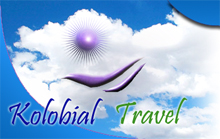Philippine
Language
Filipino is the national language. English is the business
language and widely spoken.
Philippine
Climate
The Philippines only has two seasons, Wet and Dry. March to
May is hot and dry, with temperatures ranging from 22 to 32
degrees Celsius. June to October is rainy. November to FFebruary
is cool with temperatures ranging from 22 to 28 degrees Celsius.
Philippine
Entry Regulations
All visitors with valid passports may enter the country without
visas and may stay for 21days provided that they have tickets
for onward journey. HongKong and Taiwan Passport holders must
acquire special permits from Philippine Embassies and consulates.
Philippine
Currency
The unit of currency is Peso ( P ). One peso is equal to 100
centavos ( c ). Bank notes come in denomination of P10, P20,
P50, P100, P200, P500 and P1,000. Coins come in 5c, 10c, 25c,
P1, P5, P10.
Philippine
Foreign Exchange
Banks and moneychangers may be found in malls, resorts, travel
offices and popular tourist destinations. Changing US Dollars,
British Pounds, German Deutschmarks, Canadian and Australian
Dollars, and Japanese Yen is not a problem in Manila. In other
provinces, however, currencies other than the US Dollar may
be harder to change.
Philippine
Cash
Make sure you have an adequate amount of pesos before embarking
on your trip. It’s also good idea to have bank notes
lower than P100 handy for taxi fares, meals and snacks, and
other purchases.
Philippine
Communication Facilities
Facilities for International Direct Dialling, fax, cell phone,
internet, email and worldwide express delivery are widely
available. Most of the Deluxe and First Class hotels in Manila
and major cities are equipped with high speed internet access.
Philippine
Domestic Transport
By air there are a number of domestic carrier which provides
daily services to major towns and cities. Chartered flight
to major domestic destinations are also available. By sea,
interisland ships connect Manila to major ports. Ferries ply
the smaller islands. By land, bus lines traverse the country’s
different provinces and cities. Metered and Fixed rate taxis
are widely available in major towns and cities. Anywhere else,
the jeepney is the most popular and most inexpensive way to
go around. In Metro Manila, the fastest way to commute is
via the railway systems.
Philippine
Accommodations
In Metro Manila, key cities and major towns throughout the
country, a wide selection of de luxe, standard, economy and
pension-type accommodations is available. In island destinations,
there is a proliferation of resorts ranging from “AAA”,
“AA”, and “A” to “SIR”
(Special Interest Resort)
Philippine
Voltages
Electricity is at 220V, except for Baguio where 110V is the
norm. some hotels offer both 220V and 110V outlets. Plugs
are the US Style flat two-pin variety.
Philippine
Clothing
Keep it cool. Since its’ mostly hot in the country cotton
tees and denim jeans are the norm. Light clothes, shorts are
best for traveling. Bring a light jacket or sweater when traveling
to cooler climate or going on ferry rides.


